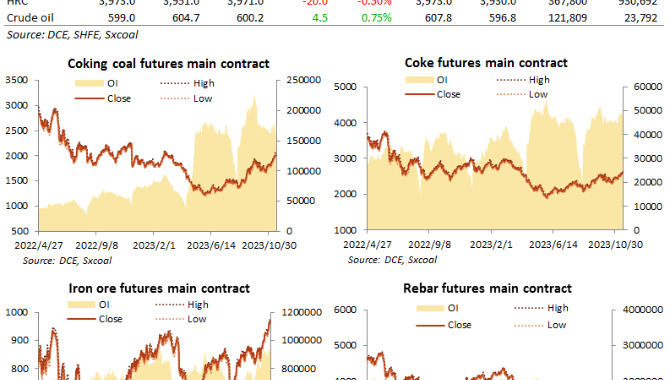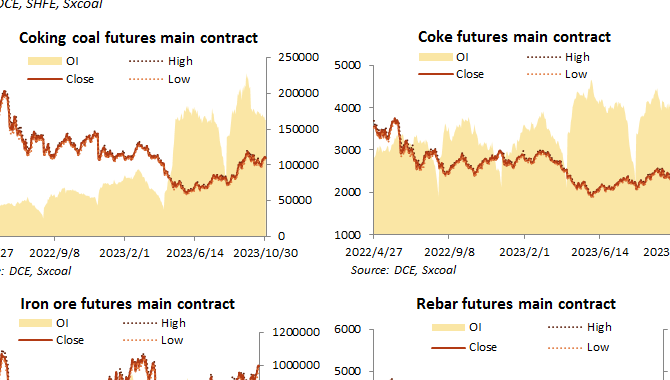China's soybean demand is expected to be sluggish in the first half of 2022 on the back of weakening crush margins, which is likely to dampen the euphoria surrounding record demand forecasts by key agencies.
While the US Department of Agriculture projects China to import 100 million mt of beans in marketing year 2021-22 (September-August), S&P Global Platts Analytics sees the import volumes at record 102 million mt on the back of strong hog herd growth in the country.
However, many China-based crushers are not that optimistic.
China is heavily dependent on soybean purchases as it processes more than 80% of imported beans into animal feed, but with the country’s sow herd on a downtrend over the last few months, the crushers expect the oilseed demand to slacken at least in the first half of 2022.
China's fledgling pig population is recovering from the adverse impact of the African swine fever epidemic, which first emerged in the country in August 2018 and resulted in the loss of over 50% of its swine population within a year.
“Pig farmers have lost hundreds of yuan on each pig during the second half of 2021, which has forced many breeders to reduce their capacity,” a China-based crusher said. And reduced pig numbers are likely to severely impact demand for soybean-based animal feed, he said.
In addition, if China's soybean imports data in 2021 is anything to go by, the crushers' worries could be well-founded.
Total soybeans import by China from January through November was estimated at 87.65 million mt, down 5.5% on the year, according to the customs data.
Declining hog herd
Animal feed demand was at the core of China's voracious appetite for soybeans in the last decade, but declining hog herd in the latter half of 2021 has resulted in slackening of soy-based pig feed demand.
According to the Ministry of Agriculture and Rural Affairs, or MARA, China's sow herd at the end of November was estimated at 42.96 million heads, down 1.2% on previous month.
The breeding sow herd has been on a consecutive negative growth since July 2021, MARA's data showed.
Typically, there is a six-month lag between pig herd's negative growth and the resultant slowdown in pig feed purchases. Therefore, all indications point to a sluggish demand for soybean-based animal feed, at least in H1 2022.

The negative growth trend of pig herd may persist well into 2022, an analyst from China-based crushing company said. “The destocking pressure is likely to grow larger in Q1 2022, when the pork consumption slumps after the Chinese New Year,” he said.
Pig oversupply has caused pork prices to slide in 2021, pushing hog margins into negative territory, which in turn has pressured the crush margins.
According to Platts assessments, the monthly average of China's gross soybean crush margin has been estimated at negative 5.8 $/mt between June through December 2021, compared with 11.8 $/mt in the first five months of the year.
Crush margin is the profit derived from processing soybeans into soybean meal and oil.
Soybean substitutes
China's soybean demand faces another headwind in 2022 in the form of government's attempts to reduce soybean usage to control inflation.
The Ministry of Agriculture, or MOA, has already established a national standard of compound feed for raising piglets, in order to cut average protein consumption.
By adding soybean meal substitutes, such as wheat, the low protein diet has been well adopted in large-scale pig farms, with feed protein level dropping to 13.6%, about 2 percentage points lower than the industrial average, MOA said.
“If the low-protein substitutes are used nationwide as animal feed, China's soybean demand could reduce by 20.41 million mt in a year,” said Qin Yinglin, chairman of Muyuan Foodstuff, a leading pig farming company.
Freight volatility may alter buying pattern
Soaring freight rates have been taking a larger share of input cost for soybean trade in China. And this trend is likely to persist in 2022.
In 2021, the average freight rate of Brazil to North China had increased more than 60% on the year as fuel prices spiked and supply chain bottlenecked amid frequent port congestion.
As a result, crushers have been facing relentless pressure on their margins since early 2021.
Soybean demand coverage for January 2022 shipment is only 76% done, compared with 100% in the same period in 2021, as volatile freight costs have made crushers very cautious.
Facing negative margins since mid-2021, crushers postponed their soybean purchases and waited for better margins.

However, the margins didn't improve as the freight rates surged 100% on the year in the last two quarters in 2021, Platts data showed.
China-based traders are concerned that the freight rates are showing no signs of easing going into 2022, especially with the re-emergence of COVID-19 in the country.
“Soaring freight costs, volatile crude oil prices, unsteady supply chain and rising coronavirus cases in China have stoked uncertainty in the country's crush sector,” a China-based crusher said. Moreover, any unexpected change in crude oil supply will roil the freight rates, he said.
The unpredictability in the freight costs has made crushers very cautious in their buying patterns.
“With such uncertainties prevailing amid declining crush margin, the Chinese soybean buyers will continue to postpone their usual purchasing plans and take more opportunistic strategies to secure a better margin later,” a China-based beans trader said.
Source: Platts
The opinions expressed herein are the author's and not necessarily those of The Xinde Marine News.
Please Contact Us at:
media@xindemarine.com



 PIL launches Academy to strengthen workforce compet
PIL launches Academy to strengthen workforce compet  Coal shipments to advanced economies down 17% so fa
Coal shipments to advanced economies down 17% so fa  China futures market updates at close (Nov 14)
China futures market updates at close (Nov 14)  CISA: China's daily crude steel output down 5.7% in
CISA: China's daily crude steel output down 5.7% in  China futures market updates at close (Oct 31)
China futures market updates at close (Oct 31)  CISA: China's daily crude steel output down 1.2% in
CISA: China's daily crude steel output down 1.2% in